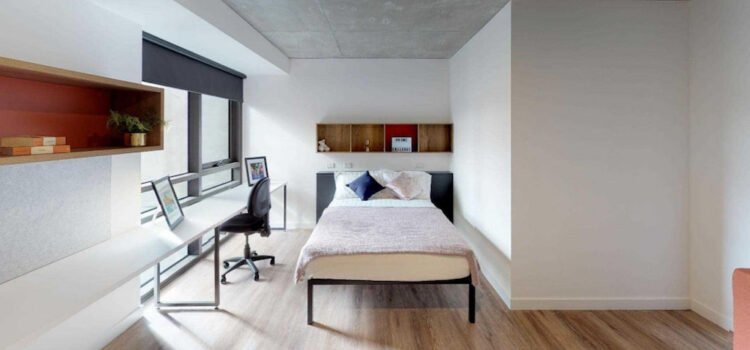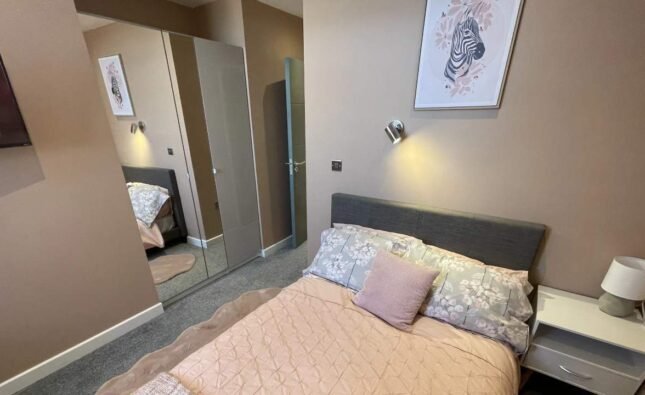When studying in Melbourne, accommodation choices are often a contest between “budget” and “convenience”. Students of RMIT University enjoy the convenience of being in the core area of the CBD, but they have to face an average weekly rent of about AU$450. Deakin University students enjoy a cost-performance ratio of AU$220 to AU$320 per week for shared rentals around the Burwood campus, but they have to endure the hustle and bustle of commuting to and from the CBD.
In recent years, a “cross-school co-rental” model has quietly emerged among students of two schools – choosing the “middle ground” between the two campuses, which can not only share the rent and reduce costs, but also balance the commuting time of both sides. This model not only addresses the single pain points of “expensive living” or “tiring commuting”, but also enables students from different professional backgrounds to spark the connection between life and study. This article will create a “cross-campus sharing guide” for RMIT and Deakin students from aspects such as popular area recommendations and budget and commuting balance techniques.
Popular Cross-Campus Shared Rental Areas: Find Your “Commuting Balance”
The main Campus of RMIT (City Campus) is located in the northeast corner of Melbourne’s CBD, and the main campus of Deakin University (Burwood Campus) is located in the southeastern suburb. The straight-line distance between the two university is approximately 15 kilometers. The key to choosing cross-campus sharing is to find the desired student flats in Melbourne in the middle area where the commuting time to both campuses is similar, the rent is reasonable, and life is convenient. The following three areas, due to their status as transportation hubs and complete supporting facilities, have become the top choices for students of the two university to rent together.
Box Hill
Box Hill is located in the east of Melbourne, 14 kilometers away from the RMIT CBD campus and 8 kilometers away from the Deakin Burwood campus. It is the “golden hub” for cross-campus rental between the two schools. From Box Hill to RMIT, you can take the Belgrave/Lilydale line train to Melbourne Central Station, which takes about 25 minutes. It’s a 5-minute walk to the main campus of RMIT. To get from Box Hill to Deacon Burwood, you need to take Bus No. 767 directly to the campus gate, which takes about 15 minutes, or ride a bike for 10 minutes (the road is flat and there is a bike lane).
Renting a three-bedroom, one-living-room house in Box Hill costs AU$220 – AU$270 per person per week, which is not much different from the average rent of Deakin University accommodation near the campus. A two-bedroom, one-bathroom apartment costs between 275 and 350 Australian dollars per person per week, which is slightly less cost-effective than a three-bedroom, one-living-room house. In terms of living facilities, Box Hill Central Shopping Centre (including Coles, Dahua Supermarket and Kmart) is within a 5-minute walk. Meanwhile, Chinese restaurants, Japanese and Korean restaurants, and dessert shops are scattered throughout the area for students to explore. Box Hill Hospital is a 10-minute walk away. There are many GP clinics. Free consultation is available with OSHC insurance. In addition, the Whitehorse Manningham Library (24-hour open area) is a 15-minute walk away and is suitable for weekend self-study.

Glen Iris
Glen Iris is located in the southeast of Melbourne, 10 kilometers away from the RMIT CBD campus and 5 kilometers away from the Deakin Burwood campus. It is the cross-campus area with the “shortest commuting time”. Students living in Glen Iris can take the Glen Waverley Line train to Flinders Street Station to RMIT, which takes about 18 minutes. Then transfer to Tram No. 109 for 5 minutes to reach the RMIT School of Design. If you set off for Deakin Burwood, you can take tram No. 70 directly to the campus, which takes about 12 minutes, or walk for 25 minutes.
A three-bedroom, one-bathroom house in Glen Iris costs AU$250 – AU$300 per person per week, and the house is well maintained. The average cost of one-bedroom apartment is about AU$440 per week for full rental. Compared with RMIT student accommodation with one-bedroom in the CBD, this price is very cost-effective. Glen Iris Village Shopping Centre (including Woolworths, pharmacies and cafes), an 8-minute walk; Chadstone Shopping Centre (the largest shopping mall in the Southern Hemisphere) is a 10-minute drive away and is perfect for weekend shopping. Close to Gardiners Creek Reserve Park, it features a lakeside walkway and a picnic area, making it an ideal place to relieve study stress. In the Glen Iris area, train, tram and bus lines converge. During off-peak hours, commuting to both campuses can be compressed to within 20 minutes.
Camberwell
Camberwell is located in the east of Melbourne, 8 kilometers from the RMIT CBD campus and 7 kilometers from the Deakin Burwood campus. It is the area with the most balanced commuting time between the two schools (both about 20 minutes). To get to RMIT from Camberwell, you need to take the Belgrave/Lilydale line train to Melbourne Central Station, which takes about 18 minutes. It’s a 5-minute walk to the teaching building. To get to Burwood, you can take Bus No. 733 to Burwood Highway Station, which takes about 15 minutes, or ride a bike for 12 minutes (passing through the Camberwell Junction business district).
There are many houses in the Camberwell area. Renting a four-bedroom, two-bathroom house costs an average of AU$225 to AU$275 per week. If you can find four people to share a place with, the cost performance is very high. Camberwell has a certain “cultural and artistic old district” quality of life. Camberwell Junction has independent bookstores (Readings), vinyl record stores, niche cafes, and street performers on weekends. Camberwell Sunday Market is open every Sunday, where you can search for second-hand furniture and vintage clothing. You can get practical items for just AU$10 per person.

“Dynamic Balance” Between Budget & Commuting:
The core of cross-school shared rental is “exchanging reasonable rent for acceptable commuting time.” However, many students tend to fall into the trap of “only seeing the low rent and ignoring the fatigue of commuting” – for instance, you choose to share a place in the far suburbs, saving AU$50 per week but spending an extra hour commuting each day. In the long run, this is actually not worth it. The following three tips will help you find the optimal solution for “budget-time”.
Calculate “Time Cost Account” : Commuting Time × Hourly Wage = Hidden Expenses
Part-time hourly wages for international students in Melbourne are generally between AU$15 and AU$25 (such as restaurant waiters, supermarket stock clerks, and Chinese tutors). Suppose you spend one more hour commuting each day (30 minutes more for a one-way trip) than before. If you attend classes five days a week, it would be a hidden time cost of five hours, equivalent to a loss of AU$75 to AU$125 (at a rate of AU$15 to AU$25 per hour).
Use “Flexible Area Selection Based on The Class Schedule”
The difference in course schedules between RMIT and Deakin can affect the choice of a shared rental area. Business and education courses at Deakin Burwood campus are mostly scheduled at 9 a.m. (morning classes), while design and engineering courses at RMIT often have studio sessions in the afternoon or evening (evening classes).
- Deakin students with more morning classes (such as education major, classes start at 8:30 every day), prefer areas close to Burwood (such as Glen Iris, with a 12-minute commute), and avoid getting up early to catch the bus。
- For students with many evening classes at RMIT (such as those majoring in design, classes end at 7 p.m.), it is recommended to choose areas close to the CBD (such as Camberwell, with a 18-minute commute) to avoid commuting alone late at night.
- If the course times of both sides are “complementary” (one side has morning classes and the other side has evening classes), an intermediate area (such as Box Hill) can be chosen to balance the needs of both sides.
Conclusion
Sharing a house across universities is not only about “saving money”, but also the beginning of “resource sharing”. For RMIT and Deakin students, sharing a house across campuses is not only a practical choice to “balance budget and commuting”, but also the key to unlocking an “interdisciplinary social circle”. When the creative inspiration of design students meets the logical thinking of business students, and when the urban resources of the CBD collide with the hustle and bustle of suburban life, in the shared small house, there lies another possibility for studying in Melbourne – living more comfortably at a lower cost. Trade acceptable commuting for a richer experience; View a more three-dimensional world from the perspectives of different specialties.













